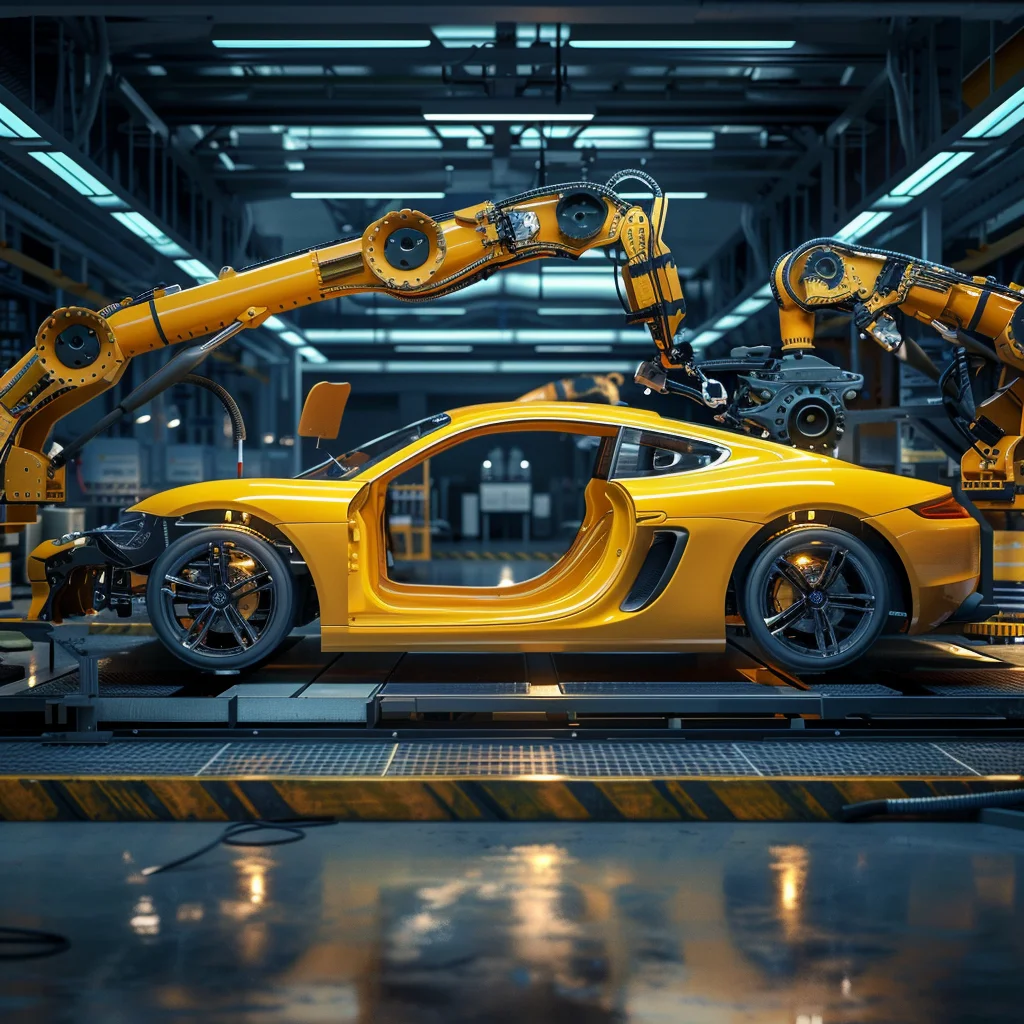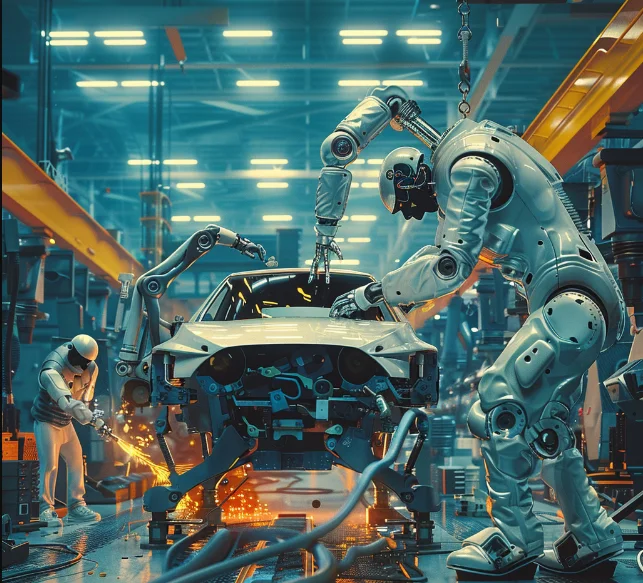The automotive industry is a dynamic and fast-growing field where product design and development play a crucial role. From concept to production, the process of creating a new vehicle involves multiple stages and challenges, driven by innovation and technological advancements. In this article, we delve into the complexities of automotive product design and development, exploring the processes, challenges, and innovations that drive the industry forward.
The Significance of Automotive Product Design
Product design in the automotive sector goes beyond aesthetics; it’s about creating vehicles that are not only visually appealing but also functional, safe, and aligned with consumer expectations and regulatory standards.

- Aesthetic and Functional Harmony: Successful automotive design integrates form and function. Designers craft vehicles that captivate the eye while ensuring ergonomic efficiency, safety, and user-friendliness. For instance, the streamlined curves of a sports car are not just about looks; they enhance aerodynamics and performance.
- Advanced Design Tools: Modern automotive design leverages advanced tools like CAD (Computer-Aided Design) software to create detailed 3D models. These tools allow designers to experiment with shapes, materials, and functionalities in a virtual environment, making it easier to visualize and refine concepts before physical prototyping.
- Customer-Centric Design: Understanding customer needs and market trends is crucial. Designers often rely on consumer insights to shape vehicles that meet diverse preferences, from luxury sedans to rugged off-roaders. For example, the growing demand for eco-friendly vehicles has led to innovative designs in electric and hybrid cars.
What is automotive product design?
Automotive product design involves creating vehicles or components that are functional, safe, and appealing. It merges engineering and aesthetics to ensure vehicles meet both technical specifications and user expectations. Designers consider ergonomics, aerodynamics, and the latest technological trends.
How to become an automotive product designer?
To become an automotive product designer, one typically needs a degree in industrial or automotive design. Skills in CAD (computer-aided design), creativity, an understanding of manufacturing processes, and knowledge of automotive trends are crucial.
What does an automotive product engineer do?
An automotive product engineer focuses on the technical aspects of vehicle development. They ensure parts and systems function correctly, meet safety regulations, and are produced efficiently. Their role includes problem-solving during prototyping, testing, and production.
What are the 5 elements of product design?
The five key elements of product design are:
Functionality: Ensuring the product performs its intended task.
Usability: Making the product user-friendly.
Aesthetics: Designing a visually appealing product.
Durability: Ensuring the product can withstand usage.
Innovation: Incorporating new technology or approaches to solve existing problems.
The Automotive Product Development Process
Bringing a new vehicle to market involves a meticulously orchestrated process, encompassing several critical stages:
- Concept Development:
Market Research and Ideation: The journey begins with market research and brainstorming sessions to generate ideas that align with consumer trends and business goals. Designers and engineers collaborate to sketch initial concepts and create basic models.
Feasibility Studies: Early concepts are evaluated for feasibility, considering factors like target audience, production costs, and technological viability.
- Design and Prototyping:
Detailed Design Creation: Using CAD software, detailed designs are developed, focusing on the vehicle’s appearance, interior layout, and mechanical components.
Prototype Development: Physical prototypes are built to test the design’s practicality and functionality. This stage involves rigorous testing and iterative refinement to address any design flaws.
- Engineering and Testing:
Technical Development: Engineers work on the vehicle’s core systems, including structural integrity, aerodynamics, and powertrain. This stage ensures that the vehicle meets safety and performance standards.
Extensive Testing: Prototypes undergo extensive testing under various conditions to ensure they perform reliably and safely. Testing phases might include crash tests, durability assessments, and road performance evaluations.
- Manufacturing Planning:
Production Setup: Planning for production involves setting up the manufacturing processes, selecting suitable materials, and establishing quality control measures.
Supply Chain and Logistics: Developing a robust supply chain and logistics strategy is crucial to ensure timely and cost-effective production.
- Production and Launch:
Mass Production: Once all preparations are complete, mass production begins. This phase involves scaling up manufacturing while maintaining quality and consistency.
Market Introduction: The vehicle is introduced to the market with comprehensive marketing and sales strategies to attract and retain customers.
Innovations Driving Automotive Design and Development
Innovation is the heartbeat of the automotive industry, pushing boundaries and setting new benchmarks. Key innovations include:
- Electric and Hybrid Vehicles:
New Powertrain Designs: The shift towards electric and hybrid vehicles requires innovative powertrain designs and advanced battery management systems.
Charging Infrastructure: Development of robust charging infrastructure and battery technologies is crucial to support the growing adoption of electric vehicles.
- Autonomous Driving:
Advanced Driver-Assistance Systems (ADAS): Features like adaptive cruise control, lane-keeping assist, and autonomous parking are becoming standard, requiring sophisticated sensor integration and software development.
Full Autonomy: The race towards fully autonomous vehicles is driving innovation in AI, machine learning, and sensor technologies.
- Lightweight Materials:
Fuel Efficiency and Performance: The use of lightweight materials such as carbon fiber and aluminum enhances fuel efficiency and performance. These materials necessitate novel manufacturing techniques and product design automotive adaptations.
Sustainability: Lightweight materials contribute to sustainability goals by reducing the vehicle’s overall environmental impact.
- Connected Cars:
IoT Integration: The integration of Internet of Things (IoT) technology enables real-time data exchange, enhancing navigation, diagnostics, and entertainment systems.
Smart Features: Connected cars offer smart features such as remote diagnostics, over-the-air updates, and advanced infotainment systems, enhancing user experience and convenience.

What Insoftex Proposes
At Insoftex, we offer comprehensive services to support your product development process automotive:
- Android Development: Craft robust and user-friendly applications for the Android platform, tailored to meet the specific needs of automotive systems.
- iOS Development: Develop seamless and intuitive iOS applications, ensuring superior performance and integration with Apple’s ecosystem.
- Cross-Platform Solutions: Create versatile apps that function flawlessly across multiple platforms, enhancing reach and user accessibility.
- Augmented Reality (AR) Apps: Integrate AR technologies to deliver immersive and interactive automotive experiences, from virtual showrooms to enhanced navigation systems.
- App Maintenance: Provide ongoing maintenance and support to keep your automotive applications running smoothly and up-to-date with the latest advancements.
- Engaging UX: Design user experiences that are not only visually appealing but also intuitive and engaging, ensuring users enjoy every interaction with your application.
Conclusion
The world of automotive product design and development is intricate and multifaceted, driven by the relentless pursuit of innovation and excellence. At Insoftex, we are committed to helping you navigate this dynamic landscape with cutting-edge solutions that enhance every stage of the process. From initial concept to market launch and beyond, our expertise in mobile app development, engineering, and technology integration empowers you to create vehicles that captivate, perform, and succeed in the competitive automotive market.
Ready to accelerate your automotive product development? Contact Insoftex today to discover how our innovative solutions can drive your success in the fast-paced automotive industry.







